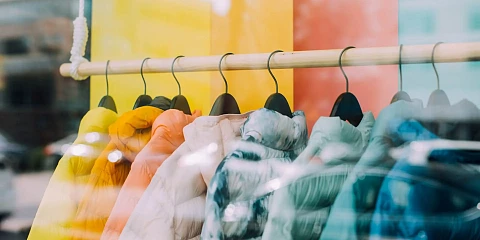
Hybrid Retail Model
10 de enero de 2021
E-commerce has been growing steadily since the beginning of the pandemic, and it shows no evidence of slowing down in the short term.
According to a PwC survey from 2020, nearly 70% of US manufacturers and retailers said that integrating digital retail was a top priority in their sales models over the next three years.
According to Digital Commerce 360, US consumers will spend $861.12 billion on digital purchases in 2020, up 44% year over year.
Despite the 2020 pandemic-fueled boom, the growth trend remains. In the first quarter of 2021, consumers spent $196.66 billion shopping online. That represents a 39% increase compared to the same quarter in 2020.
The acceleration produced by Covid and the change in social, labor and consumer norms, has radically affected the survival of brands based on physical stores and on-premise retailers. They had little option but to adapt to the new reality. In most of these cases, the solution has been moving to digital channels and getting creative in terms of their advertisements..
But this “forced” growth of e-commerce does not spell the end of physical stores. That’s because they still make sense. They are where brands connect with their customers and are often able to offer greater satisfaction in the shopping experience. Stores are key, whether they’re supporting the digital shopping service or fulfilling "last mile" service or delivery in less than 2 hours.
What is the Hybrid Retail Model or Bricks and Clicks model?
It means bringing the physical store to the web and the web to the physical store, expanding and adapting services to the needs of each customer. Bringing the store to the web means integrating online sales with the network of physical stores, offering customers the opportunity to pick up orders made online or by phone.
On the other hand, integrating the web within the physical store means using technology and digital tools like apps, touch screens or augmented reality. At the same time, it can allow customers to buy products that are not in stock at that precise moment, with technology advising about the availability (and traceability) of products. This makes it possible to sell without keeping large quantities of stock on-premises.
This business model involves the store as an essential point. It is important because customers can physically go to see the products, try them on and pick up the orders they have previously made online or even by phone. It also offers them a space to enjoy a traditional shopping experience, which is still loved by many.
In the US market, 11% of sales are digital. Although they have been growing at a rate of 15% per year, they will continue to grow until they represent approximately 25% of total sales by 2025. Still, it’s important to remember that physical sales still represent the vast majority of sales.
The Hybrid Retail model is based on the idea of offering customers multiple shopping possibilities and experiences. It blurs the lines between the offline and online business or shopping experience. This model can only be successful if these two worlds are combined. Brand adaptation and customers satisfaction in their shopping experiences come as added value.
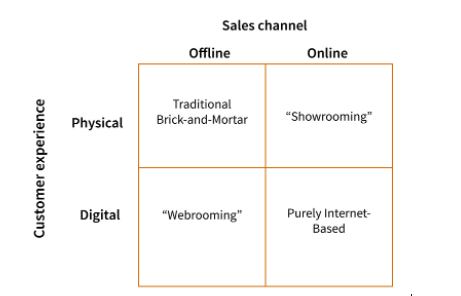
Implications of the Hybrid Retail Model
A lot of technology is involved with this model. For example, there are smartphone apps to make appointments in stores, which help retailers enhance the safety of clients in the pandemic world. Beyond that, apps can be used to book a change room, place orders, or use augmented reality to help customers try on clothes virtually.
But, besides the customer-facing technology, it’s also absolutely fundamental behind the scenes. Using technology to enhance logistics is particularly key, as it helps companies adapt to demand, market changes and client demands.
In terms of logistics, there are different systems for pickup and delivery:
-
- Traditional Courier Shipping, or products sent via logistic operators. The timespans can vary, ranging from 24 hours to 15 days or more.
-
- Local delivery shipments. Sevices with rapid delivery, or “last mile” delivery, can send products within two hours. Amazon popularized this with Amazon Prime. The logistics can be handled by a company’s own logistics service or a third party.
-
- In-store pickup. This turns physical stores into a type of locker for picking up products.
-
- There is also the Click & Collect model. After ordering a product online or by phone, the client can pick up their products in the store at an agreed-upon time, without having to wait in lines.
In terms of inventory and returns, we should highlight the importance of management and establishing flexible processes to avoid detracting from the online shopping experience. We’ve already mentioned the advantages of this model when it comes to selling products that stores don’t have in stock, but on the flip side, there’s the challenge of being able to manage stock seamlessly and integrate with suppliers.
These hybrid models can be applied to retail in sectors as diverse as fashion or food. Powerful branMacy’ske Macys, Zara, JC Penny, Sears and H&M have already adopted hybrid models into their business strategies.
Trends in Hybrid Retail
- Redesigning spaces so they allow for more social distance between people. This can involve technology that reminds people to keep distance, something which is crucial during the pandemic.
- Apps to reserve change rooms or “safely” visit stores, line up virtually so clients can calculate the time they have to wait to enter the store.
- Monitors that display information about the occupation in stores.
- Touchless or biometric payments to avoid contact. Or the use of augmented reality for the same goal.
- Live streaming e-commerce/Livestream shopping. Shopping platforms and apps that incorporate live video, two-way communication and the ability to make virtual purchases. This allows for a merger between physical shopping, interactive experience and recommendations of people like influencers.
- Offline shopping events turn into streaming videos to promote online shopping.
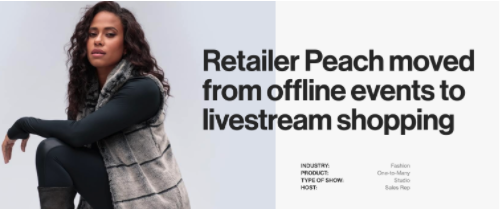 Image: https://bambuser.com/customers/peach
Image: https://bambuser.com/customers/peach
Live video chats that are fused with the ability to buy online from a smartphone smart TV. An example of this is the HelpJess app, which allows users to get in touch with store employees.
Turning shops into dark stores is another upcoming area and can help facilitate last mile deliveries.
The growth of livestream shopping in China
The rapid popularization of livestream shopping in China can be attributed to several factors. For instance, 5G infrastructure in China is quite advanced, there aren’t as many payment barriers and the ecosystem of apps and social networks have an easier time integrating with payment platforms and online shopping, making users see social commerce as something more natural.
On any given day, a European or American uses dozens of apps, each with its own specialty, whether that be social media, text messaging, video, payment, etc. The Chinese user doesn’t need to switch between apps since they can get all of those services from WeChat.
The livestream shopping trend in China was born from users sharing their shopping experiences on social media while they chatted with their audience. From there, the e-commerce giant Taobao professionalized the organic phenomenon.
Then. the lockdown after Chinese New Year really gave this content wings. According to Statista, the demand for live-streamers soared by 60% compared to the pre-covid era.
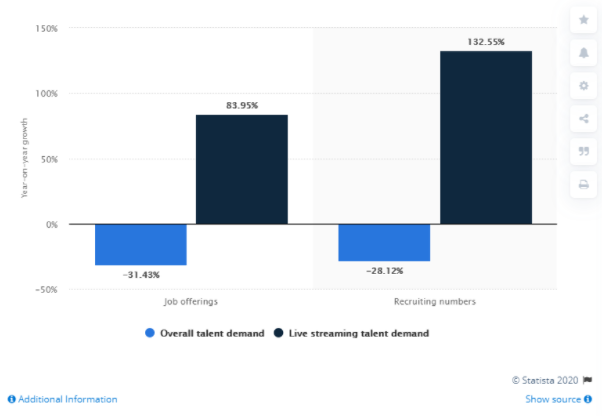 Growth in the demand for live-streamers before and after the 2020 Chinese New Year.
Growth in the demand for live-streamers before and after the 2020 Chinese New Year.
Livestream shopping and e-commerce in the current context
There is still some uncertainty in the market regarding the pandemic and how it will progress in the months to come, so e-commerce businesses are still the top choice of many users. Technology-driven strategies like hyper-personalization and augmented reality are adding value to shopping experiences, both online and offline.
Livestream shopping is a newer trend for western brands and retailers, but it can also be an effective approach. It is usually led by influencers, and gives more power to the role of social commerce, which aims to boost engagement with the active participation of users. Its success is based on the possibility for social interactions.
For example, Amazon is already getting on this train with Amazon Live. The company pitches it as a platform for fun and unique shopping experiences and is being used by a wide range of sectors. On the other hand, YouTube is developing a way to integrate likes into videos with its “Products in this Video” function. Meanwhile, Facebook has recently launched new e-commerce features.
Some other examples of companies pioneering the livestream shopping model are Bambuser and Helpjess.
Nuestras últimas novedades
¿Te interesa saber cómo nos adaptamos constantemente a la nueva frontera digital?

Insight
17 de noviembre de 2023
Uniendo mentes creativas para innovar en el retail
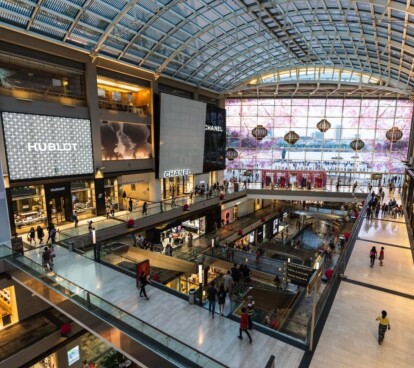
Insight
17 de octubre de 2023
Nuevos horizontes del sector consumo y distribución
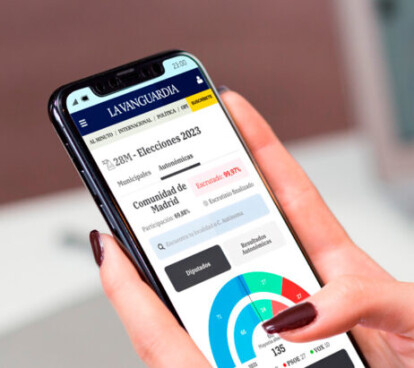
Insight
18 de julio de 2023
Impulsa tu cobertura electoral con BeatVote: El gran aliado de los medios de comunicación durante la noche electoral
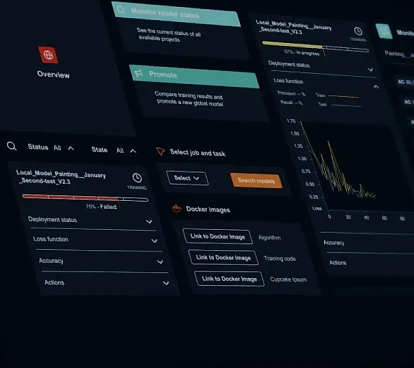
Insight
8 de mayo de 2023
Ayudamos a los robots a aprender unos de otros asegurando los datos de los clientes